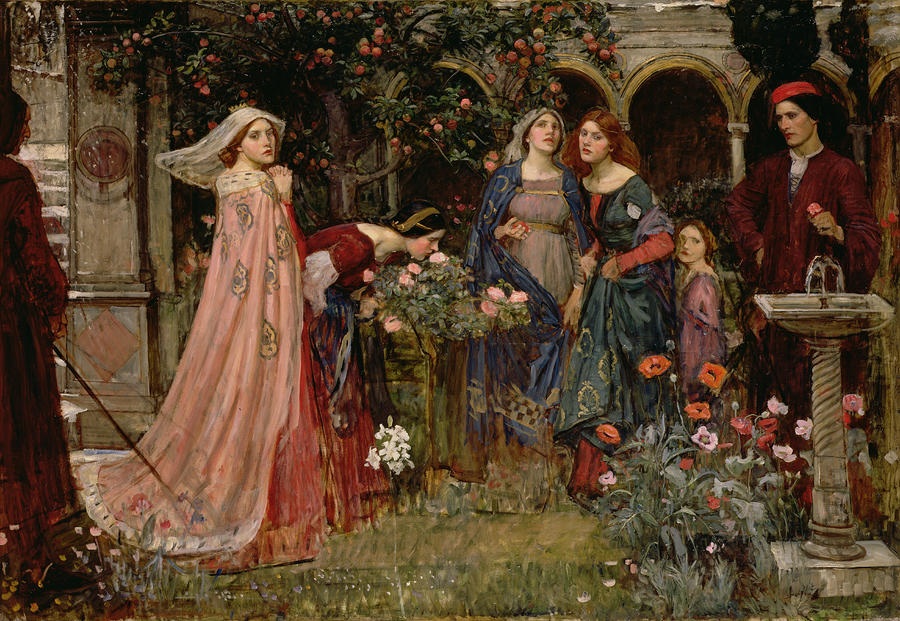Medieval Garden Plants and Layout: How to Design a Medieval Garden?
Medieval gardeners grew a wide variety of medicinal, edible and decorative plants, selected for their usefulness and beauty. They preferred simple geometric and symmetrical layouts that to them expressed order, beauty and tranquillity. They cultivated native flowers, and used natural materials and mixed planting which is in line with the modern ecological approach. A medieval garden is therefore not difficult to design, create and maintain organically.
We know about medieval gardens from the works of medieval scientists, poets and artists. They describe not only the appearance, properties and cultivation of plants, but also their spiritual significance. To a medieval observer garden plants had rich religious and secular symbolic meaning. Below I explain what was grown in medieval gardens, how plants were perceived and how a medieval garden can be designed today.
Medieval garden plants and layout in Roman de la Rose
Let’s first of all take a look at a contemporary source. A medieval garden is described in a famous French poem Roman de la Rose. It was written in the 13th century by two authors. Guillaume de Lorris first wrote a shorter version of the poem around 1230. Aproximately 45 years later, around 1275, it was greatly expanded by another poet, Jean de Meun.
Roman de la Rose allegorically describes a courtier’s attempt to woo his beloved. He sees the beloved, symbolically represented as a beautiful rose, for the first time in a walled garden. In his courtship he is assisted by various allegorical figures, representing vices, virtues, emotions, mental states and so on.
The walled garden and plants that grew in it are described with great care. It is, of course, an idealized garden, much richer than most real gardens of the time. Nevertheless, it gives us an idea of what plants people knew and aspired to have.
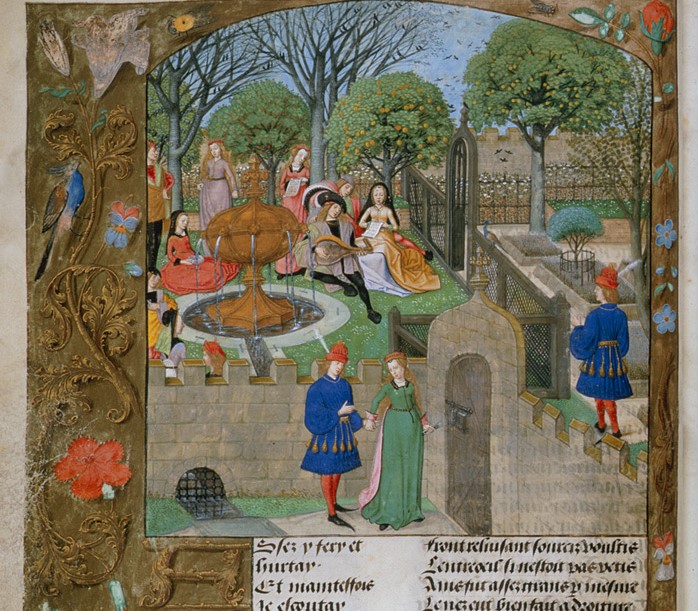
Garden layout in Roman de la Rose
First of all, we are told that the garden occupied a square piece of land: ‘ it was long as it was wide’. It had a symmetrical layout: trees grew evenly in rows. They were spaced ‘most carefully’ and precisely, and set at equal distances from one another – ‘thirty or forty feet each way’.
The garden was transacted by clear streams. Their banks were covered with grass making a ‘couch for her and him’ that was ‘as soft as a bed, and quite discreet’.
There was also a fountain on a foundation of white marble, positioned under a particularly lovely pine tree.
Garden plants in Roman de la Rose
The garden in Roman de la Rose had trees, spices, flowers and grass. Among the plants were exotics brought from ‘the land of Saracens’.
The fruit trees were abundant and included pomegranates which, as the author explains, suit the diet of ‘ill folks’. There were also several varieties of nuts, nutmeg, almonds, figs, dates, peaches, apples, pears, quinces, chestnuts, medlars, ‘plums black and white’, cherries and sorbs (Sorbus domestica, also known as the service tree).
In addition the garden contained spices, including cloves, ‘licorice root’, ‘peppery grains’, anise and cinnamon.
It also had flowers in different colours, including violets, periwinkles, and many red scented roses.
The garden also contained laurels, pines, cypresses and olive trees which, as the author comments, were ‘things that here one rarely sees’.
In addition the garden included a woodland area planted with elm, beech, hornbeam, aspen, ash, firtrees, oaks, and maples. This part of the garden was inhabited by deer, rabbits and squirrels.
How to design a medieval garden?
This can be achieved through the following steps:
1. Plan the medieval garden layout
Medieval gardens had a symmetrical, measured, geometrical layout – plan such a layout. Include paths crossing at right angles. A highly symbolic medieval garden layout would be a square or rectangular shape with two main paths meeting at the centre at the right angle and forming a cross.
Between the paths plan symmetrically positioned beds. The exact pattern is not that important. I can be very simple, but it has to be symmetrical.
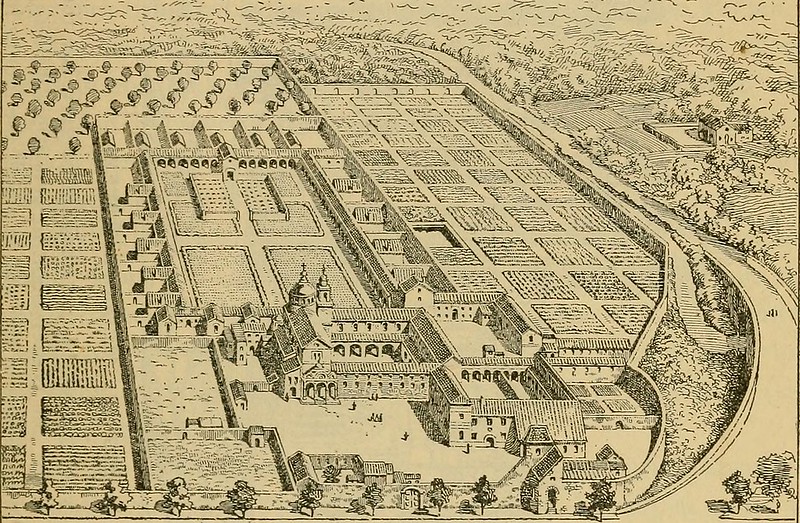
2. Use natural materials
Make the paths and beds. Use only natural materials, either stone or wood. Paths can be covered with wood chips or gravel. Edging for beds can be made from wicker.
3. Include a fountain
If possible, include a fountain, perhaps at the centre of the symmetrical layout. Fountains are often present in medieval depictions of gardens. They symbolized cleanness and regeneration.
Fountains also had a religious significance. In the Song of Songs in the Bible a lover compared his beloved with ‘a fountain of gardens, a well of living waters, and streams from Lebanon’. In the book of Revelation ‘a pure river of water of life, clear as crystal’ is said to flow from the throne of God.
If it is impossible to include a fountain, use another feature that would emphasize a formal geometrical structure. For example, a stone, wood or ceramic stand with a sundial at the centre of the garden where two paths cross at a right angle.
4. Use medieval garden plants
Plant the beds with flowers, herbs and vegetables that were commonly grown in the Middle Ages. If the space allows include bushes and trees. A selection of medieval garden plants is given below.
Position flowers, vegetables and trees in geometrical patterns, for example, in rows. Don’t separate the garden into flower and vegetable sections. Grow vegetables and flowers in their individual beds, but in the same area. Medieval gardeners used mixed planting, which also helps to deter pests and maintain soil fertility naturally.
***Read more about the look of medieval gardens and plants they contained: Garden History: What did the Medieval Gardens Look Like?
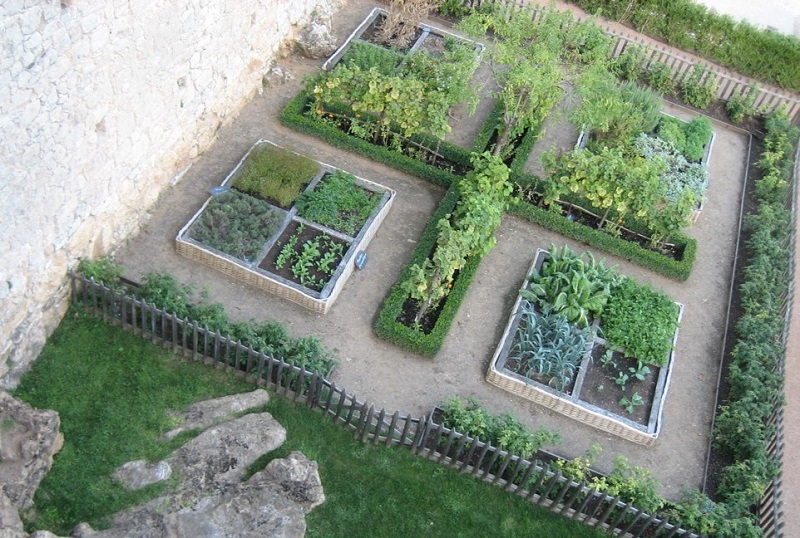
Medieval garden plants: what to grow in a recreated medieval garden?
As we can see from the Roman de la Rose and other sources, medieval gardeners knew and cultivated a very wide range of plants. A selection below includes plants very commonly depicted and described in medieval paintings, treatises and gardening books.
I don’t give full detail here, but every single plant mentioned below had an important role in medieval medicine, as attested by numerous recipes surviving in medieval and early modern medical books.
1. Fruit in medieval gardens
Apple (Malus pumila)
Apple was believed to be ‘the tree of knowledge of good and evil’ that God planted in the centre of the Garden of Eden. According to the biblical book of Genesis, God prohibited Adam and Eve to eat its fruit, but they were tempted to do so, and as a result became mortal and were expelled from Paradise.
Apple therefore had associations with the Fall, but also with Salvation. When child Christ is depicted in paintings, he is sometimes holding an apple.
In the Middle Ages apple also symbolized beauty and abundance. In the biblical Song of Songs the Bride says: ‘As the apple tree among the trees of the wood, so is my beloved among the sons. I sat down under his shadow with great delight, and his fruit was sweet to my taste’.
In the Greek myth about the Judgement of Paris, well-known in the Middle Ages, Paris gave the golden apple to Venus, the Goddess of Love, believing her to be the most beautiful of goddesses.
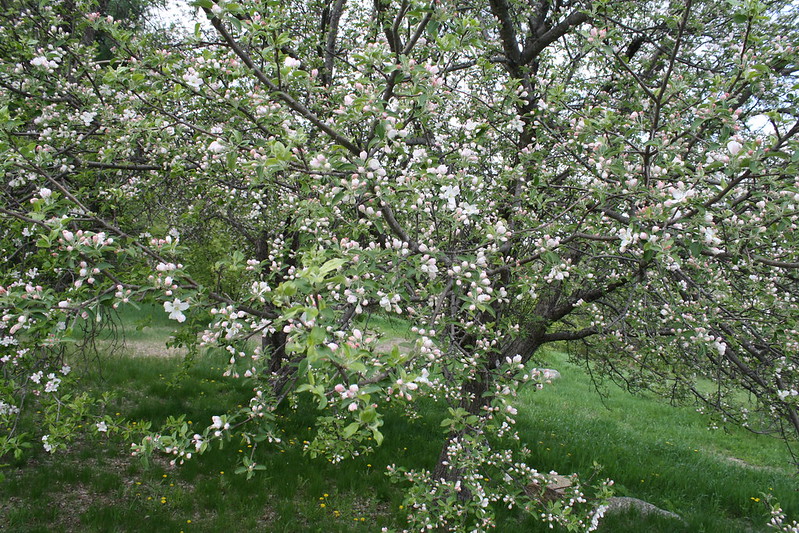
Cherry (Prunus avium)
In medieval Christianity cherry had a special significance. It symbolised both earthly pleasures and heavenly rewards. According to a medieval legend, when Joseph and Mary were traveling to Bethlehem before the birth of Christ, a cherry tree miraculously blossomed and immediately bore fruit in spite of the freezing cold of the winter.
Wild strawberry (Fragaria vesca)
Strawberry is depicted on numerous medieval paintings and tapestries. It was valued for its beauty and medicinal properties.
Orange (Citrus sinensis)
Bitter Seville orange (Citrus aurantium) was cultivated in Spain, Italy and Provence probably as early as the 9th and 10th centuries. Sweet varieties were introduced in the 13th and 14th centuries. Orange is frequently depicted on 15th-century paintings and tapestries, partly because it was new, but also because of its decorative qualities. It symbolized wealth and abundance.
Walnut (Iaglans regia)
According to a medieval theologian, Hrabanus Maurus, ‘a tree of nuts signifies the Church.’ He compared the church to a nut tree to represent its fruitfulness and stength.
2. Flowers in medieval gardens
Rose (Rosa centifolia)
Roses, white, pink and red, were probably the best loved of all medieval flowers. They were very rich in religious and secular symbolism. ‘Rose without thorns’ was one of the titles of the Virgin Mary.
Several medieval authors wrote that, along with the violet and the lily, rose grew in the Garden of Eden and was without thorns before the fall of Adam and Eve.
In love poetry rose symbolized the beloved. Medieval literature depicts ladies sending a circlet of roses to their knights as a symbol of love and constancy.
Madonna lily (Liliurn candidum)
White lily was associated with the Virgin Mary and known as the Madonna Lily. It was a symbol of purity and chastity. In medieval paintings of the Annunciation archangel Gabriel, coming to tell the Virgin Mary that she will bear Christ, is often depicted holding a lily.
***Read about the traditional use of white lily in cosmetics: Natural Anti-Aging Cosmetics: 19th-century Recipes
Sweet violet (Viola odorata)
In the Middle Ages violet was one of the best-loved flowers. It symbolised humility and was therefore associated with the Virgin Mary. Several medieval authors say that violets grow in Paradise.
***Read more about the history and symbolism of violets:
Sweet Violet (Viola Odorata) in History: A Symbol of Joséphine and Napoleon Bonaparte
Sweet Violet (Viola Odorata) and Parma Violet: How to Grow Forgotten Treasures
Daisy (Bellis perennis)
Like violet, daisy was a flower of the Virgin Mary and was very often depicted on medieval paintings. Its French name is paquerette, ‘flower of Easter’.
Medieval English poet Chaucer wrote a poem The Legend of Good Women about virtuous women whose fates were tragic. In the prologue the narrator tells at great length and in the strongest possible terms of his passionate love of daises. In May the first thing he has to do in the morning is to go to see them growing in a meadow. At sunset he observes them go to sleep, for they fear the night and hate darkness.
Cowslip (Primula veris)
A traditional name for a cowslip is the ‘keys of heaven’ or ‘Saint Peter’s keys’. It was also associated with the celebrations of May Day (1st of May). Its flowers were collected in the countryside and brought home as decorations and a reminder of spring.
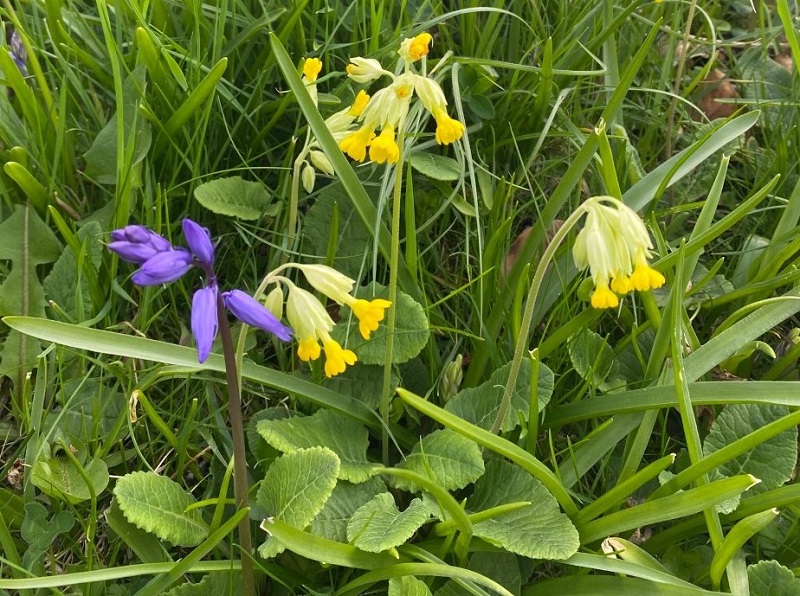
Forget-me-not (Myosotis scorpioides)
Forget-me-not was a symbol of fidelity and constancy, not only in love, but also in faith. It’s heavenly blue colour was believed to remind humans about their immortal soul and their true home in heaven.
***Read more about the symbolism of forget-me-nots: Growing Forget-me-nots; Forget-me-nots in Legends and History.
Iris (Iris germanica)
Iris symbolized royalty and nobility because it was perceived as a tall, upright, powerful and majestic flower. It had associations with the Virgin Mary as the Queen of Heaven. French royal symbol fleur-de-lis is believed by many to be a stylized iris.
Carnation (Dianthus caryophyllus)
Pinks and carnations were valued for their beauty, clove-like fragrance and medicinal properties. In the 15th century the carnation became a popular emblem of betrothal and marriage. Both men and women were represented on paintings holding carnations as symbols of betrothal or happy marriage.
Because of its sweet smell carnation was also a flower of Paradise and a symbol of Christ and the Virgin Mary.
Columbine (Aquilegia vulgaris)
Columbine’s name derives from the Latin word columba ‘dove’. It was believed to be similar to doves in colour. Like the dove, columbine was one of the symbols of the Holy Spirit. It therefore often appears with the Madonna lily in Annunciation scenes. Columbine also symbolized loyalty and fidelity.
Periwinkle (Vinca major and Vinca minor)
Periwinkle was an important medicinal plant and appears on paintings depicting the Garden of Paradise.
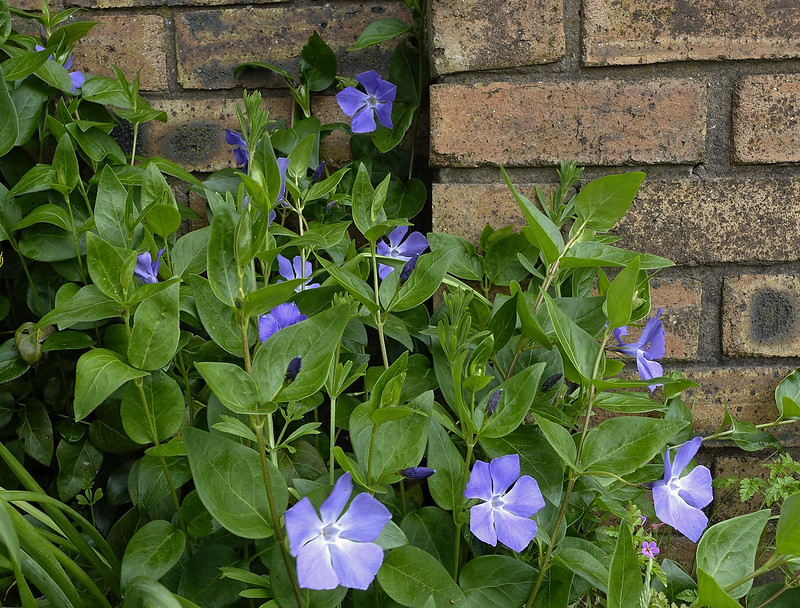
Daffodil (Narcissus poeticus)
Daffodil was a symbol of spring, Easter and Resurrection. Its common German name was Osterlilie (‘Easter lily’).
Pansy (Viola tricolor)
Pansy signified the Trinity and was called herba trinitatis (‘herb of Trinity). This is because the wild pansy has petals of three colours: yellow, purple, and white. Its English name ‘pansy’ is derived from the French ‘pensée’ (‘thought’). It symbolized contemplation and remembrance.
***Read more about the symbolism, history, cultivation and use of pansy: Growing and Eating Pansies
3. Herbs in medieval gardens
Sage (Salvia officinalis)
Sage was one of the most common herbs grown in medieval gardens. It was used both as a spice and as medicine. It was believed to cure the effects of poison if boiled in ale or wine and drunk for three days. It’s Latin name derives from the word salvere – ‘to save’. A common medieval saying was: ‘why should a man die whilst sage grows in his garden?’
Horseradish (Armoracia rusticana)
Horseradish was a much loved spice used similarly to mustard. It was an important medicinal plant and was also used in cosmetics. Ground horseradish mixed with milk was applied by women to their cheeks to create a blushed appearance.
Parsley (Petroselinum crispum)
Parsley was widely cultivated and used as spice and medicine. It is part of the traditional French bouquet garni, a bundle of fresh herbs used to flavour numerous dishes.
4. Vegetables in medieval gardens
Broad beans
Hardy broad beans were commonly grown in Europe in the Middle Ages in monastic and private gardens. They were a part of an important Christmas custom. In several European countries, including France, Italy and Germany, a special cake was made for Christmas. A bean was put in the pastry before it was baked. When the cake was served, whoever got a piece with the bean, became a ‘king’ or a ‘queen’ for the day and presided over the Christmas celebration.
There was also a belief that in order to get a good harvest, beans needed to be planted when clocks make the largest number of strokes, that is at 10, 11 and 12 o’clock.
According to a Christian legend, when Mary Magdalen left the world to live alone in the desert, she only took with her a cup of water and a handful of beans. They served as her only sustenance for nine years, but neither the water nor the beans ever diminished.
Climbing beans, such as the runner beans and French beans, are tender warm-climate plants. They were introduced in France and Germany in the late 8th century under Charlemagne. In England they started to be grown much later, apparently only in the early 16th century.
*** Read more about Charlemagne and medieval gardening: Garden History: What did the Medieval Gardens Look Like?
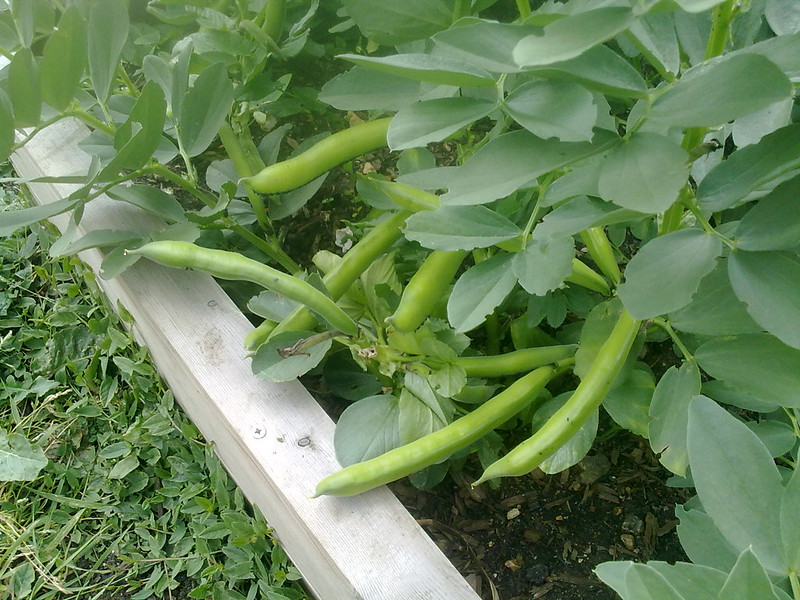
Cucumber
Cucumbers were grown in the gardens of Charlemagne in the 8th and 9th centuries. They started to be cultivated more widely in the 14th century.
Onions and Garlic
Onions and garlic were grown very widely in the Middle Ages and perceived as healthy food of ordinary people. Garlic was also believed to protect against evil. There was a custom to hang it in the house and put it under the mattresses of young children to protect them from evil spirits.
Turnip and radish
Turnips and radishes were grown both as food and for their medicinal properties. The black radish (Raphanus sativus L. var. niger J. Kern) was particularly commonly used as medicine.
To make an effective cough syrup you needed a black radish and honey. You had to cut out the middle of the radish and put some honey inside. Sweet juice that was produced as a result was given in small quantities (1 teaspoon 4-5 times a day) to cure cough.
Cabbage
Cabbage was one of the favourite vegetables used both fresh and fermented and so preserved for winter.
Spinach
Spinach was widely grown in the Middle Ages, particularly in northern Europe. In France spinach with eggs was a classic traditional dish for a very long time.
5. Trees in medieval gardens
Hawthorn (Crataegus Oxyacantha)
In the Middle Ages people believed that Christ’s crown of thorns was made of hawthorn branches. In England a variety of hawthorn was believed to flower on Christmas day.
***Read about miraculous Glastonbury Thorn: Alternative Christmas Trees.
The hawthorn also was closely associated with May Day celebrations (1st of May). Its branches with white flowers were brought from the countryside and used to decorate homes.
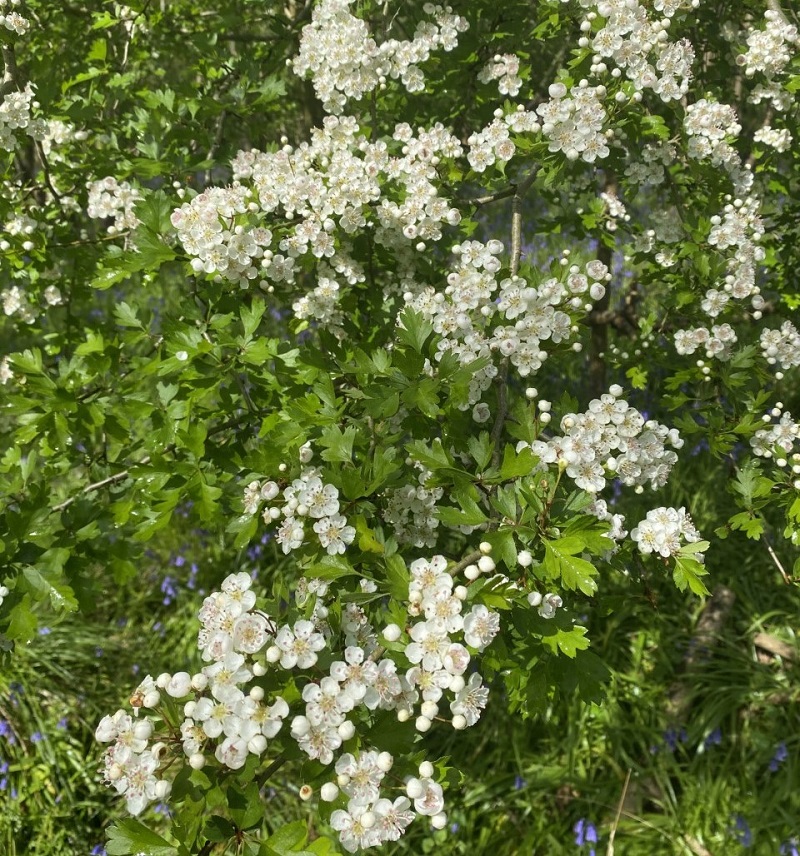
Holly (Ilex Aquifolium)
Holly tree with prickly leaves and bright red berries was for a long time associated with Christmas. It was used in decorations for Christmas already in medieval times.
Similarly to hawthorn, it was known in the Middle Ages as Christ’s thorn and symbolized the passion of Christ. As an evergreen plant, it also represented eternal life. As a result, it was a symbol of both Christ’s death and resurrection.
Image credits: featured image – John William Waterhouse, “The Enchanted Garden”, 1916-1917, Wikimedia Commons; illustration to Roman de la Rose, London, British Library, Harley MS 4425 – Wikimedia Commons; plan of Monastery of Val di Cristo in Southern Spain – Internet Archive Book Images; vegetable garden at Musée de la guerre au Moyen Âge, Château de Castelnaud by Tetue; apple tree in blossom by Matty Farah; periwinkle by 70023venus2009; broad beans by Gordon Joly.
Pin ‘Medieval Garden Plants and Layout: How to Design a Medieval Garden?’ for later
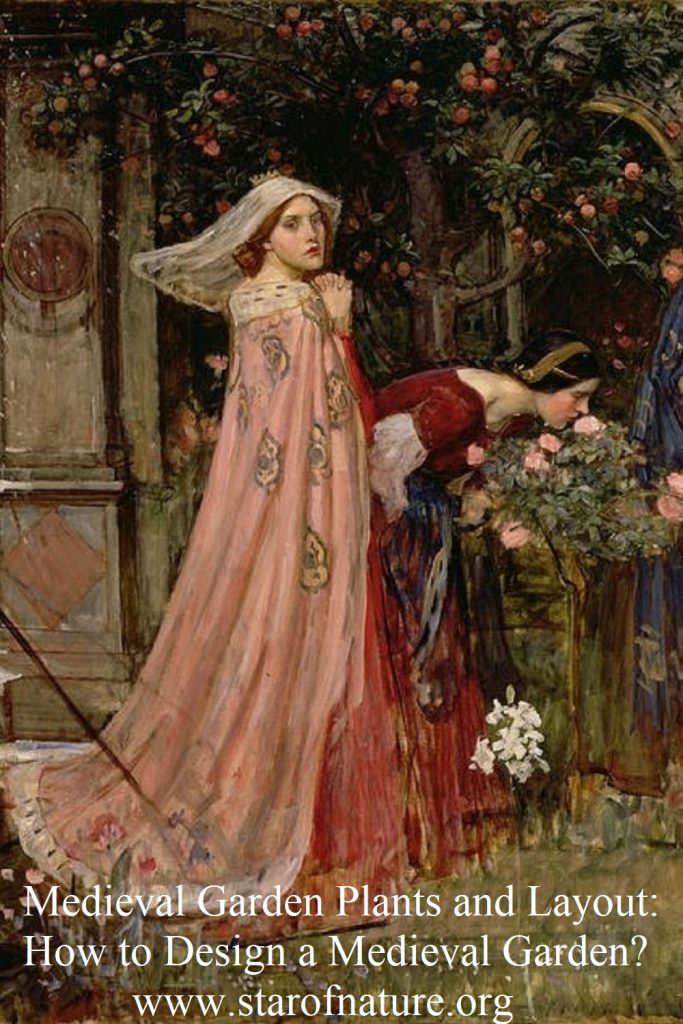
Posts related to ‘Medieval Garden Plants and Layout: How to Design a Medieval Garden?’
What did the Medieval Gardens Look Like?
Companion Planting for Vegetables in an Organic Garden
The Golden Apples of Hesperides
Roman Garden Style and Emperor Nero
Sweet Violet (Viola Odorata) in History: A Symbol of Joséphine and Napoleon Bonaparte
